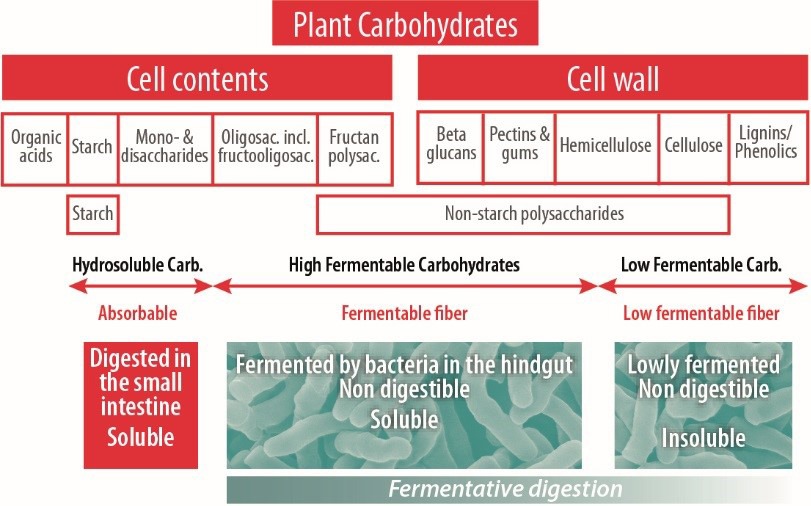Blog | Reading Time 2 minutes
Pig Microbiota Insights: Part 2 – Key role in digestion
In swine, as with other monogastric animals, most nutrients are chemically digested and absorbed in the small intestine, including proteins, lipids, and digestible carbohydrates. However, a big portion of non-digestible carbohydrates will reach the hindgut untouched. This is when the microbiota acts. This is when fermentative digestion, or microbial digestion, occurs.
Potentially, 5 to 20% of nutrients can be digested in the colon. In fact, the swine hindgut, especially in adult animals, could be compared to a fermenter similar to a cow’s rumen. Actually, we now know that many of the fibrolytic microbiota that are located in the rumen of a cow, such as Fibrobacter, Ruminococcus, Butyvibrio, or Prevotella, can also be found in the colon of pigs.
A source of energy and nutrients
Microbial digestion represents a source of energy and essential nutrients for the animal:
- Fiber degradation leads to the production of short-chain fatty acids (SCFA) that can be absorbed locally by the enterocytes and used as a source of energy for both the intestine and the pig.
- Certain carbohydrates (beta-glucans, pectins) are fermented into lactic acid by Lactobacilli.
- De novo synthesis of some vitamins (group B and vitamin C) are essential for the healthy functioning of the body.
An even greater role in sows
When compared to piglets or fattening pigs, sows are even more adapted to benefit from microbial digestion. They are equipped with a more voluminous large intestine, and the digesta remains in the large intestine for 70 to 85% of the digestion time. This confers sows with a much higher cellulolytic activity than young pigs, for example. This also explains why the digestibility of various components differs between growing pigs and sows, but it can also differ between individual sows depending on their microbiota composition and balance.
Digestion in the hindgut mainly relies on the microbiota: this is fermentative digestion. A well-balanced microbiota contributes to optimal fiber degradation and to the production of short-chain fatty acids, which are an important source of energy for the animal.
It also supports the effective reabsorption of liquids in the hindgut and adequate digestive transit. It is key to optimal feed efficiency and performance.
Click on the links below to read the other articles in the Pig microbiota insight series.
Part 3 – The Guardian of the swine immunity
Published Jan 17, 2020 | Updated May 30, 2023
